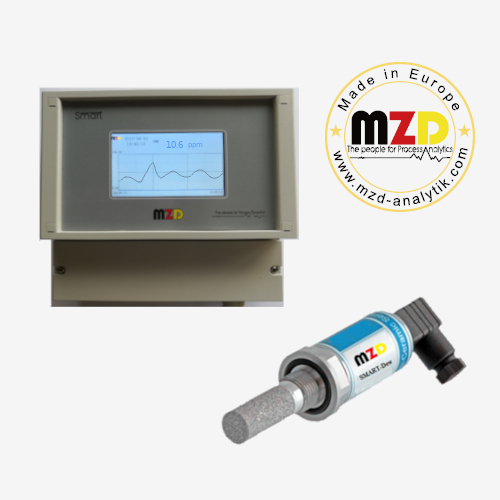
SMART-DT dew point meter in pipeline drying
High pressure process piping (and chemical vessels) are tested for leaks during construction and commissioning as well as regular maintenance. There are several methods of testing; the most common method is to close the component to be tested and then pressure test it with water, which is the simplest, safest and most economical method. Gas can also be used to pressure test the vessel, but it is not commonly used because high-pressure gas is very dangerous if the pipe leaks or ruptures during the test.
The problem with using water is that the pipe will get wet after the test. This will have two effects, the first is that the pipe or vessel will soon corrode, and the second is that the gas or liquid carried by the pipe may be contaminated by water. Therefore, the pipeline usually needs to be dried after the pressure test and before it is put into operation.
There are three methods of pipeline drying, each of which can be monitored using the MZD SMART-DT dew point meter.
1. Hot air drying
The air compressor generates hot air at one end of the pipe. The water in the pipe absorbs the heat and evaporates quickly, and the water vapor flows out with the air from the outlet at the other end of the pipe. MZD SMART-DT dew point meter is installed at the outlet of the air pipe, and the dew point has dropped from its initial value until the drying process is completed. During this process, the air is nearly saturated at the usual ambient temperature. When the pipe is dry, the dew point temperature is reduced to the inlet dew point temperature of the compressor.
2. Nitrogen purge drying
Instead of using hot air, dry air or other gases, such as nitrogen, can be used. The use of nitrogen has two advantages: the factory gas is very dry, so it has a high water absorption capacity. And it is inert and can be used in piping or process vessels where explosive or flammable gases are stored. As with the hot air drying procedure above, the dew point difference between the inlet and outlet is often used as an indicator of pipeline drying, usually ending the drying process at a dew point difference of 5°C.
3. Vacuum drying
In this method, the pipe is completely sealed and then one end of the pipe is connected to a high power vacuum pump which extracts air from the pipe. the MZD SMART-DT dew point meter is installed at the inlet of the vacuum pump to measure and monitor. After a period of time, when a stable vacuum is formed, the humidity at the outlet is reduced. The dew point will remain stable for a certain time while the residual water evaporates and is extracted. When all the moisture is removed, the dew point temperature will drop again, which means the end of the vacuum purification process.
